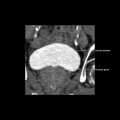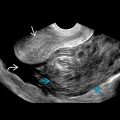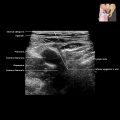KEY FACTS
Imaging
- •
Ultrasound
- ○
Initial imaging modality for evaluation of biliary system
- ○
Dilated biliary duct proximal to site of anastomosis
- ○
Focal area of narrowing may be seen in mid common hepatic duct or near hepatic hilum (latter in patients with hepaticojejunostomy)
- ○
- •
Magnetic resonance cholangiopancreatography
- ○
Heavily T2-weighted image of common hepatic duct shows upstream ductal dilatation and focal narrowing at anastomosis
- ○
- •
Cholangiogram
- ○
Performed in patients with hepaticojejunostomy in which access to anastomosis difficult with endoscopic retrograde cholangiopancreatography (ERCP)
- ○
- •
ERCP
- ○
May be diagnostic as well as therapeutic with balloon dilation and plastic stent placement
- ○
Top Differential Diagnoses
- •
Obstruction from other causes
- ○
Choledocholithiasis
- ○
Malignancy
- ○
Recurrent primary sclerosing cholangitis (PSC) (in patients with prior history of PSC)
- ○
Pathology
- •
Biliary stricture is most common type of complication after liver transplant, occurring in up to 60%
- •
In late stricture, > 1 month post transplant, usually related to ischemic injury of bile duct anastomosis
- ○
Site of stricture depends on type of biliary anastomosis created
- ○
Clinical Issues
- •
Early stricture
- ○
Usually responds well to single endoscopic therapy
- ○
- •
Late stricture
- ○
Often requires longer treatment regimens
- ○










